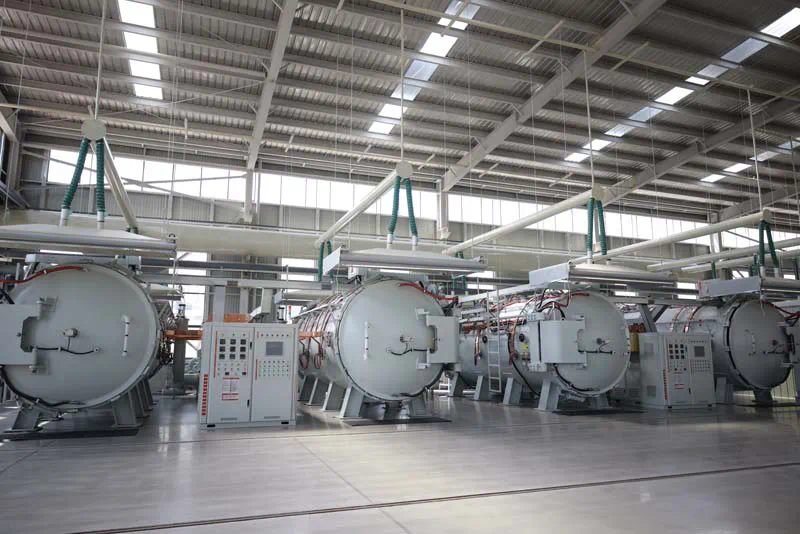Sintered Silicon Carbide- Advancements in Material Science
Sintered Silicon Carbide (SiC) has emerged as a significant material in various industries due to its exceptional properties and versatility. As advancements in material science continue to unfold, SiC is gaining prominence in applications ranging from electronics to aerospace. This article delves into the intricacies of sintered silicon carbide, exploring its properties, manufacturing processes, applications, and future trends in material science.
Introduction to Sintered Silicon Carbide
Sintered Silicon Carbide is a ceramic material made through a process that involves heating silicon carbide powder at high temperatures, allowing the particles to bond together without melting. This results in a dense and hard material with remarkable mechanical strength, thermal stability, and chemical resistance. The unique composition of SiC imbues it with properties that make it suitable for demanding applications where conventional materials may fail.
Properties of Sintered Silicon Carbide
The primary attributes of sintered silicon carbide contribute to its widespread use in various applications. Key properties include:
- High Hardness: SiC is one of the hardest materials known, making it ideal for wear-resistant applications.
- Excellent Thermal Conductivity: With a high thermal conductivity, SiC can efficiently dissipate heat, crucial for electronic components.
- Corrosion Resistance: SiC is highly resistant to chemical corrosion, granting it longevity in harsh environments.
- Low Thermal Expansion: Its low thermal expansion coefficient minimizes dimensional changes with temperature fluctuations, ensuring stability.
- Electrical Insulation: SiC exhibits excellent electrical insulating properties, making it suitable for high-voltage applications.
Manufacturing Processes
The production of sintered silicon carbide involves several key steps, each critical to achieving the desired properties. The main processes include:
Raw Material Preparation
The first step in manufacturing SiC involves sourcing high-purity silicon carbide powder. This powder must be carefully selected to ensure minimal impurities, which could affect the final material’s performance. The powders are often mixed with additives to enhance certain characteristics, such as sintering aids.
Sintering Process
Sintering is the centerpiece of SiC production. The prepared silicon carbide powder is compacted into a desired shape, typically using methods like uniaxial pressing or isostatic pressing. Following this, the compacted material undergoes a high-temperature treatment in a controlled atmosphere. Sintering temperatures usually range between 1600 to 2400 degrees Celsius, depending on the desired density and microstructure.
Post-Sintering Treatments
After sintering, the material may undergo additional treatments to refine its properties. These can include machining to achieve precise dimensions, polishing for improved surface finish, and infiltration processes where other materials are added to enhance specific characteristics like toughness.
Applications of Sintered Silicon Carbide
The versatility of sintered silicon carbide allows it to be employed across numerous industries. Some prominent applications include:
Aerospace Industry

In aerospace, SiC is utilized for components exposed to extreme temperatures and stresses, such as turbine blades and seals. Its lightweight nature combined with high strength makes it an invaluable material for improving fuel efficiency and performance.
Electronics
Sintered silicon carbide is increasingly used in the electronics sector, particularly for semiconductors and power devices. Its ability to handle high voltages and temperatures makes it suitable for applications in electric vehicles and renewable energy systems.
Defense and Aerospace
In defense applications, SiC is employed in ballistic armor and protective gear. Its hardness and lightweight properties provide enhanced protection against various threats while maintaining mobility.
Biomedical Applications
With its biocompatibility and resistance to wear, sintered silicon carbide is finding its way into biomedical devices and implants. It is being explored for use in joint replacements and dental applications due to its durability and chemical stability.
Recent Advancements in Material Science
Recent advancements in material science have further propelled the development and application of sintered silicon carbide. Innovations in nanotechnology and additive manufacturing are opening new avenues for this material. Researchers are investigating the incorporation of nanostructures into SiC to enhance its properties, such as increasing its toughness and wear resistance.
Nanostructured Sintered Silicon Carbide
The creation of nanostructured SiC involves manipulating the microstructure at the nanoscale level. This approach has shown promising results in improving the mechanical properties of sintered SiC, making it even more viable for demanding applications. Nanostructured SiC exhibits higher strength, improved toughness, and better thermal stability compared to traditional sintered SiC.
Additive Manufacturing of SiC
Additive manufacturing, also known as 3D printing, is revolutionizing the way materials are created. For sintered silicon carbide, this technology allows for complex geometries that were previously impossible to achieve with conventional methods. By layer-by-layer deposition of SiC materials, manufacturers can create intricate designs tailored to specific applications, enhancing performance and reducing material waste.
Future Trends and Challenges
The future of sintered silicon carbide appears promising, with ongoing research focusing on expanding its applications and improving its properties. However, challenges remain in its production and implementation.
Cost and Scalability
One of the primary challenges facing the widespread adoption of sintered silicon carbide is the cost of raw materials and the energy-intensive manufacturing processes. Researchers are actively exploring alternative sourcing strategies and more efficient production techniques to make SiC more accessible to various industries.
Environmental Considerations
As industries become more environmentally conscious, the sustainability of materials plays a crucial role in their acceptance. Efforts are underway to develop eco-friendly production methods and recycling processes for sintered silicon carbide, aligning with global sustainability goals.
Conclusion
Sintered silicon carbide stands at the forefront of material science advancements, offering unparalleled properties that meet the demands of various high-performance applications. As researchers continue to innovate and overcome existing challenges, the potential for SiC to revolutionize industries is immense. From aerospace to electronics, sintered silicon carbide ceramic silicon carbide is poised to play a critical role in the future of technology and engineering, marking a significant milestone in the evolution of advanced materials.
https://flycatcoo.com/

